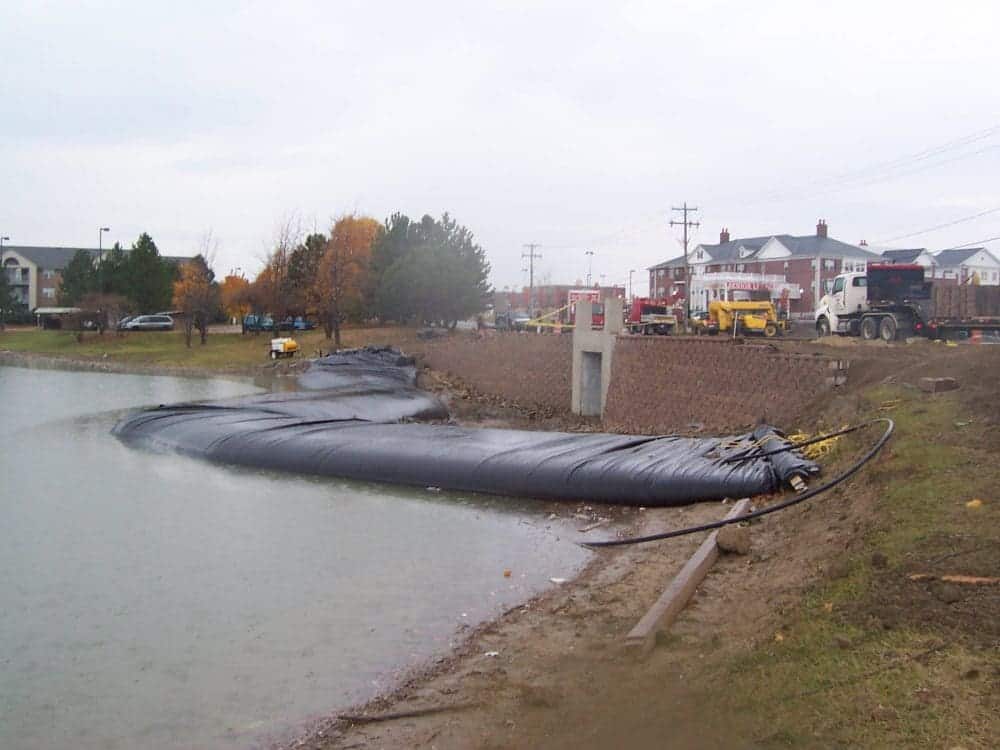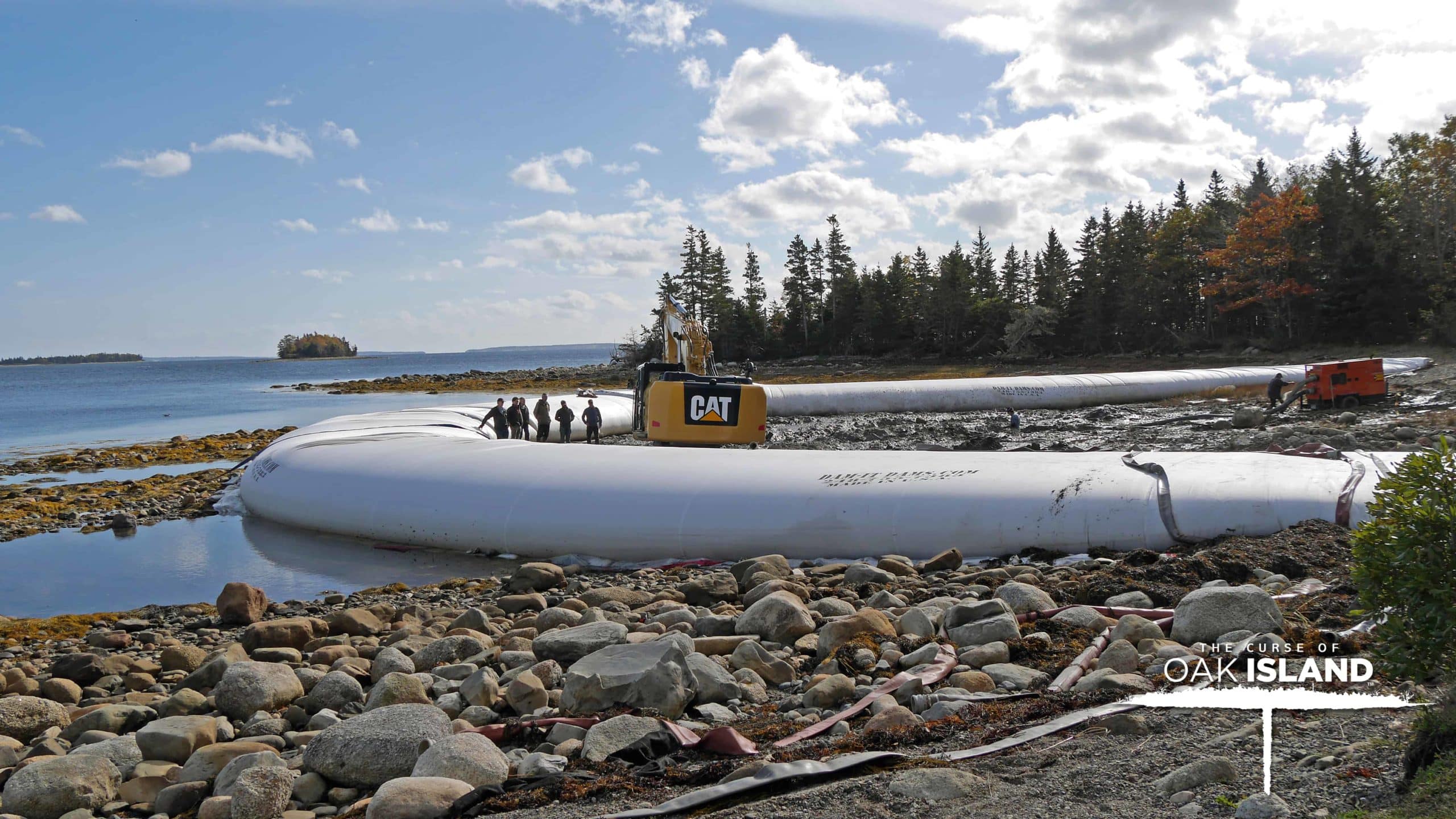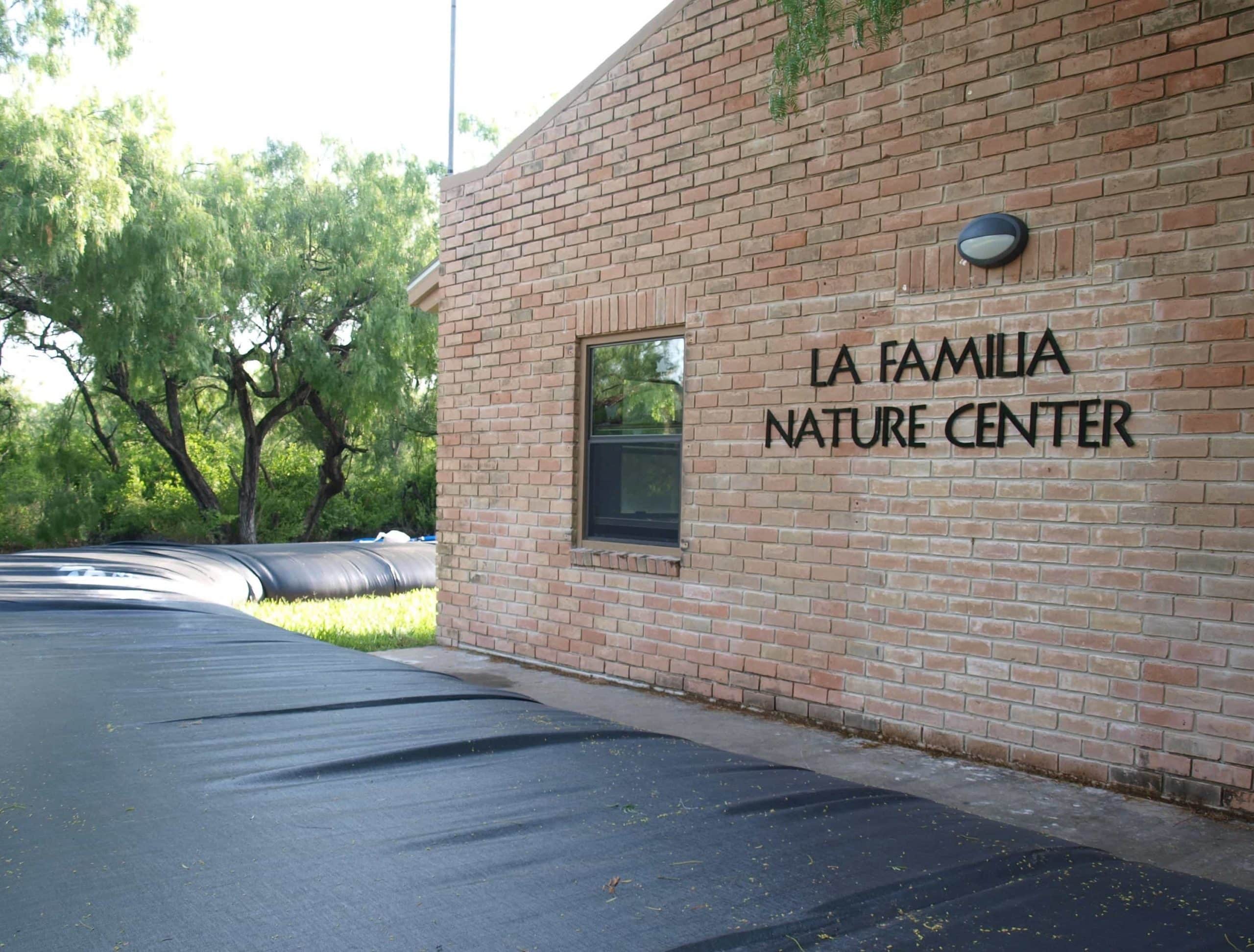
During the course of a construction project, it may become necessary to employ a dewatering method remove the water from the area, therefore allowing the project to move forward. This can be done several different ways. In this article, we will focus on water filled dams (or cofferdams.)
Typically, a cofferdam is a temporary enclosure in or around a body of water that is constructed to allow dewatering of an enclosed area. Cofferdams are used to create a dry environment so that construction (or repairs) can proceed on a job site. They were first used in 1736. Today’s cofferdams are typically conventional embankment dams of both earth- and rock-fill, although concrete or some sheet piling also may be used.
A water filled cofferdam uses on site water to fill two inner-tubes. The inner-tubes are wrapped in an outer casing, that is made from heavy duty, geotextile woven polypropylene. The dual inner tubes act as a stabilizer to keep the dam from rolling due to outside forces or water pressure. Once filled, the inner tubes provide the ideal combination of weight, mass, and pressure to stabilize the cofferdam while the project proceeds. Water filled cofferdams come in a wide range of sizes and are generally adaptable to most projects. These types of cofferdams are temporary in nature, therefore, they leave little to no environmental impact.
Practical Applications for Dewatering with Cofferdams
Below is a list of dewatering situations in which a cofferdam may be useful:
- Bridge/Pier Repairs
- Chemical Spills Control
- Construction Site Dewatering
- Dredging
- Environmental Remediation
- Environmentally Sensitive Area Protection
- Fish Habitat Protection
- Levee Construction and Repairs
- Pipeline Crossings
- Pond Liners and Repairs
- Shoreline Restoration
- Water Storage
- Wetland Management


